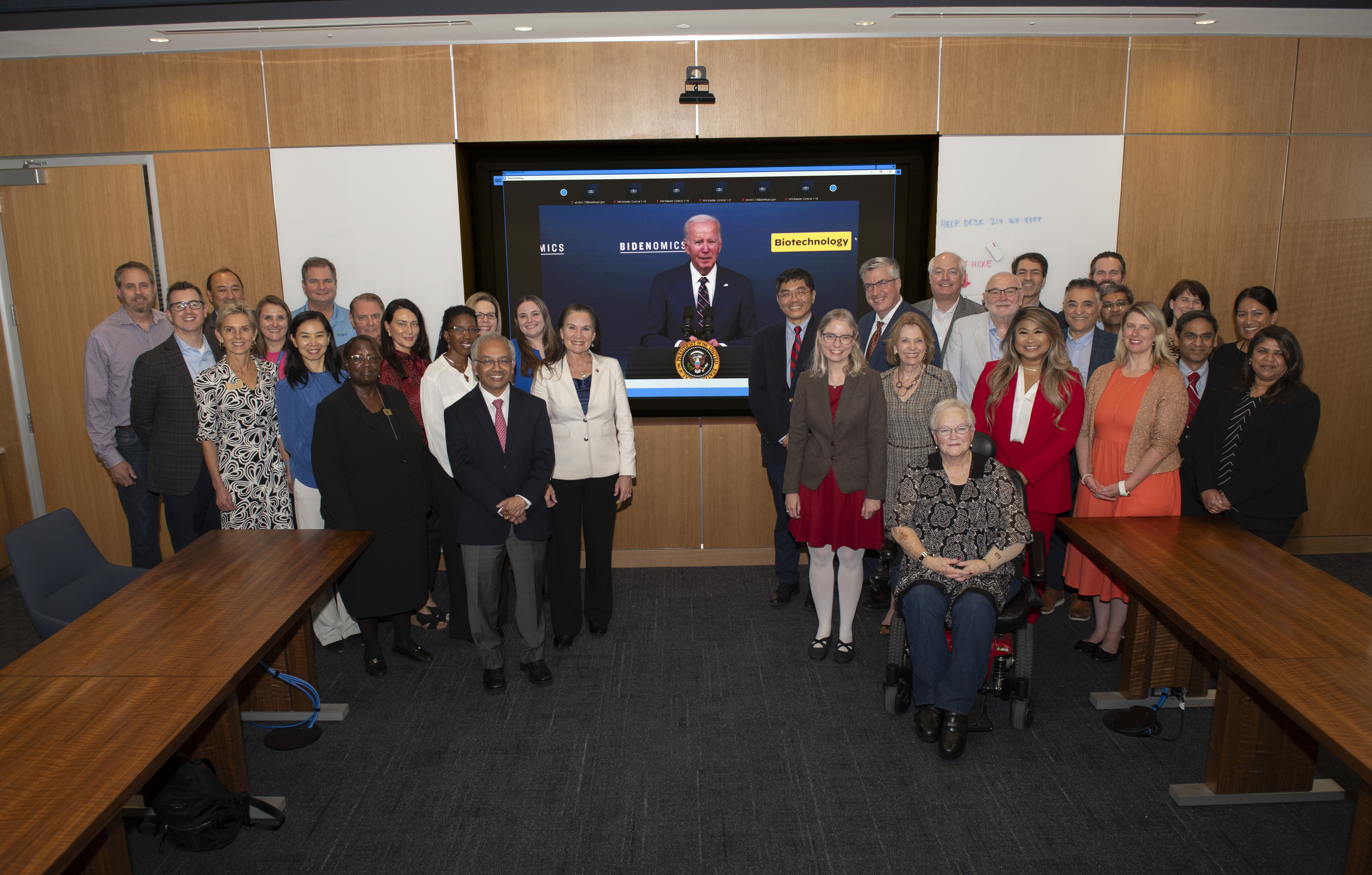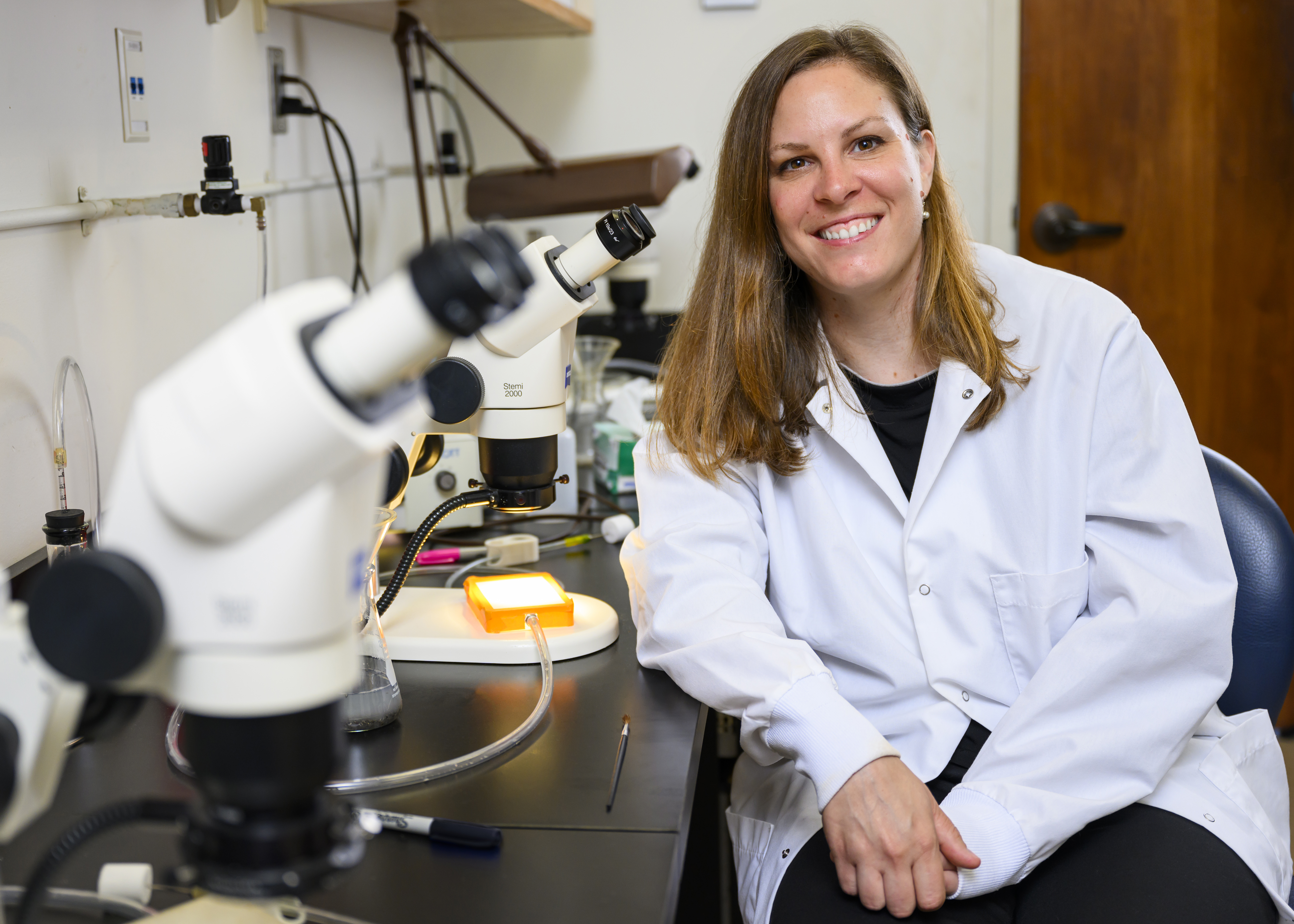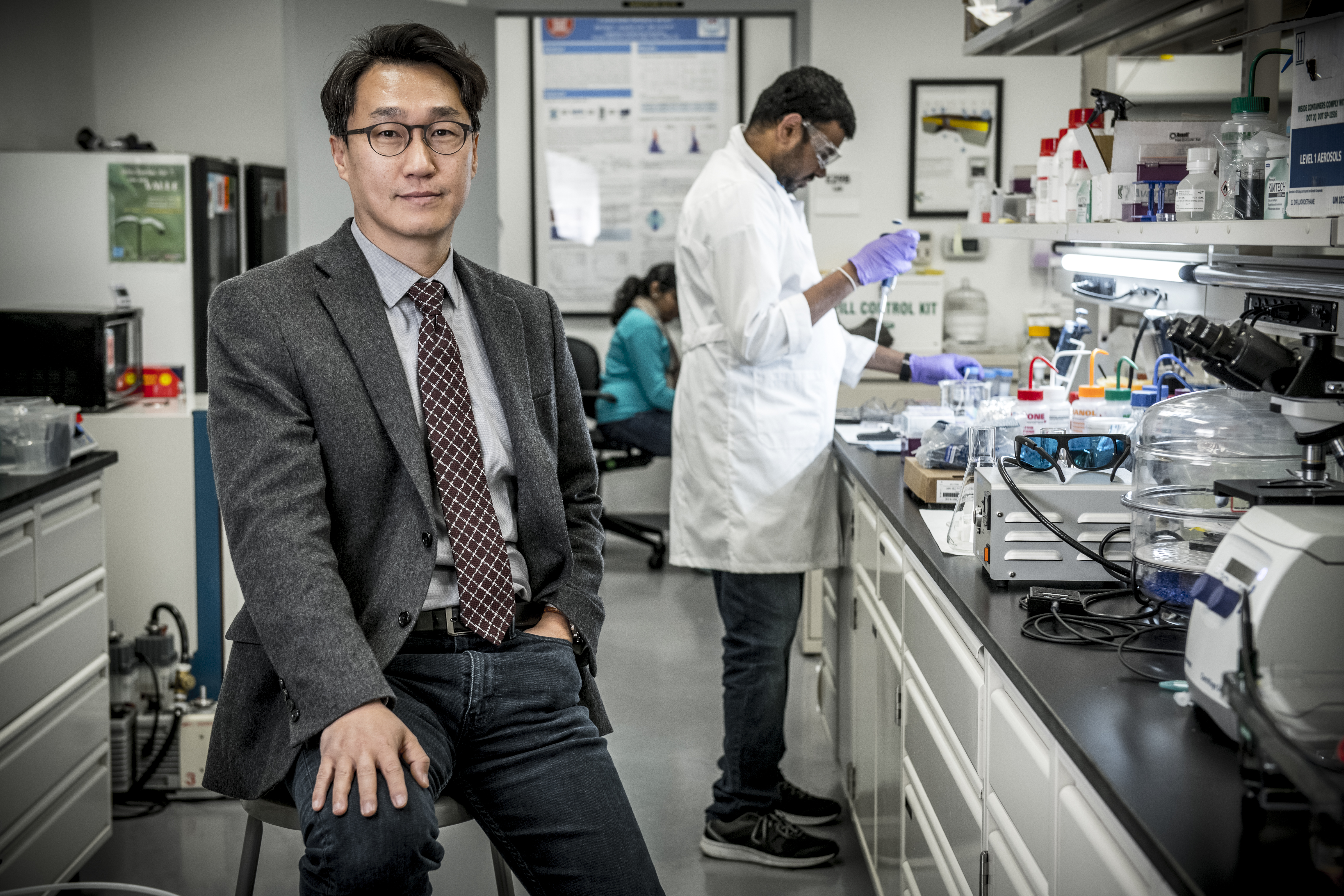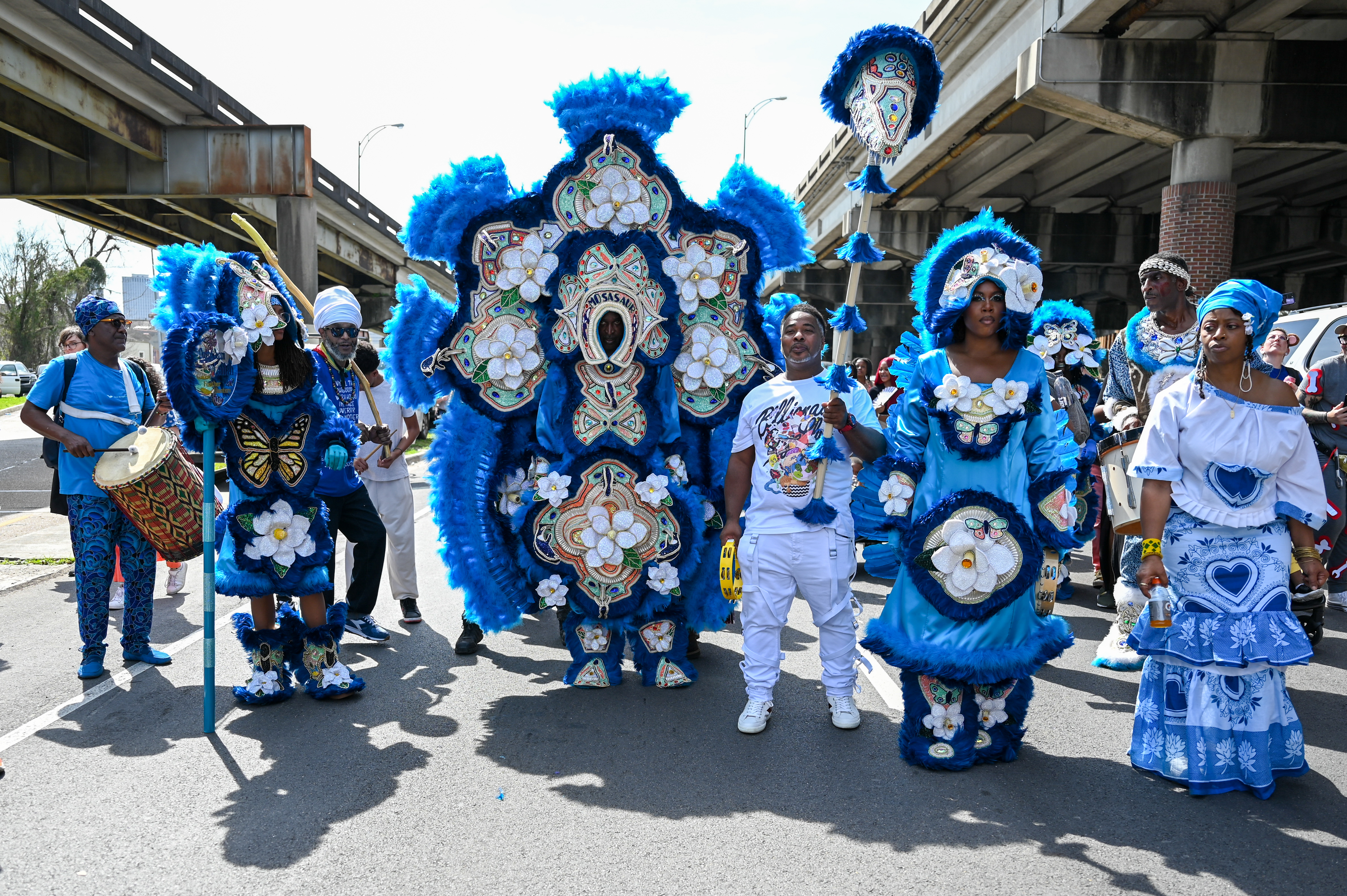Food spoilage sensor, migration from American cities' and pandemic's effect on the arts: Top 2023 SMU research stories
From studying a gene that is mutated in many human cancers to learning more about an age-old volcano on the Moon, SMU professors and students kept making international headlines in 2023. Here are some of the highlights.
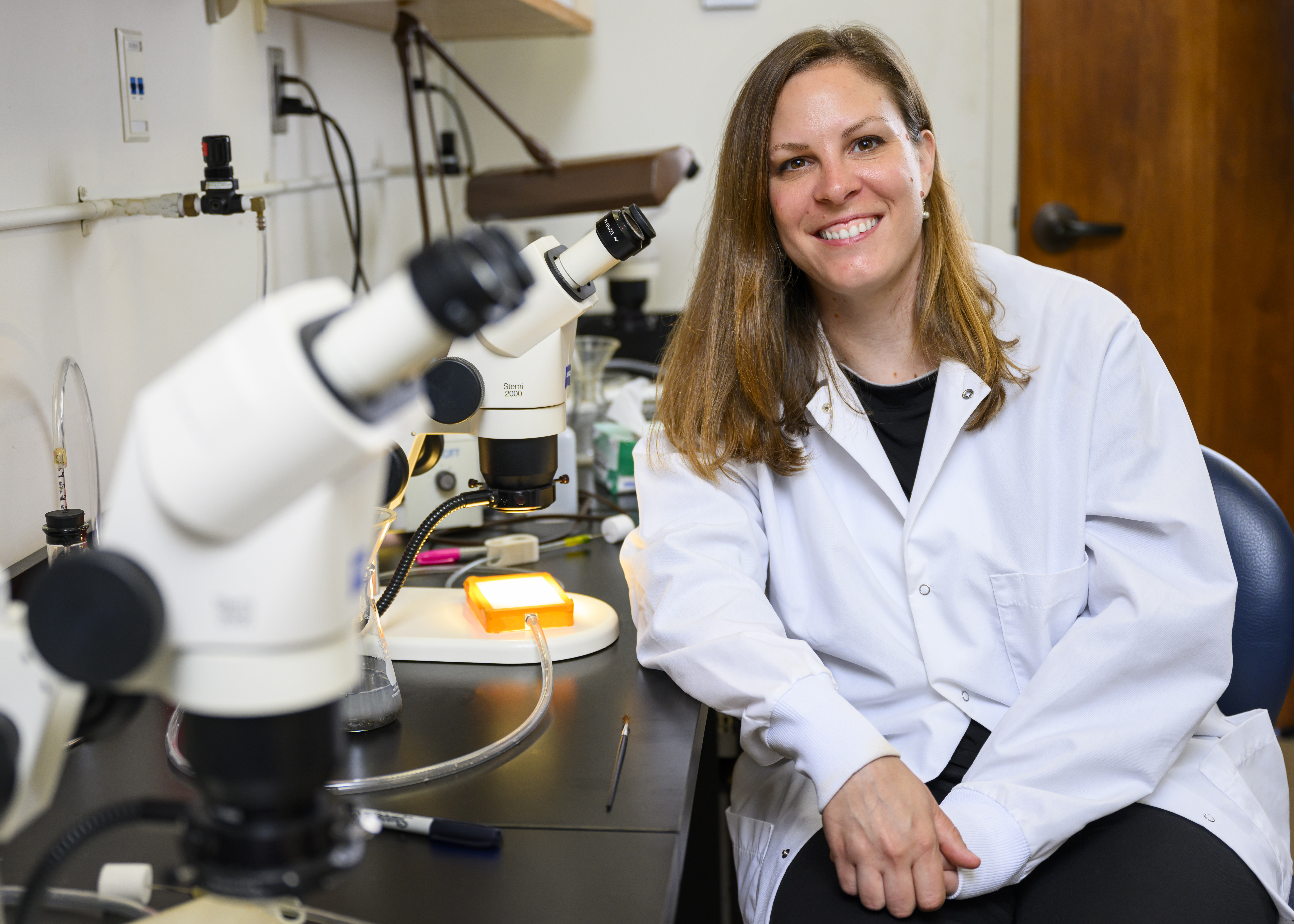
DALLAS (SMU) – From studying a gene that is mutated in many human cancers to learning more about an age-old volcano on the moon, SMU professors and students made local, national and international headlines in 2023. Here are highlights. Stay up-to-date on the latest research stories at LinkedIn’s Research at SMU:
The White House announced that SMU will lead one of 31 newly appointed technology hubs authorized by the 2022 bipartisan CHIPS and Science Act. The Dallas Morning News, Dallas Innovates, The New York Times, Bloomberg, Associated Press, Reuters and The Hill covered SMU’s role as leader of the Texoma Semiconductor Tech Hub.
Planetary scientist Matt Siegler led a group of researchers investigating a patch of lunar terrain 20 times warmer than the surrounding area. The New York Times, Forbes, the Economist and the Dallas Morning News covered their conclusion, the hot area is a 30-mile underground granite formation that is evidence of an ancient volcano unlike anything found before on the moon.
A New York Times opinion piece on changing American cities included research from economist Cullum Clark on population decline in coastal and Midwestern cities and growth in Sunbelt cities.
The Dallas Morning News, the Philanthropy News Digest and Dallas Innovates covered the O’Donnell Foundation’s $30 million gift to SMU to support data science, engineering and research. In a Dallas Morning News op-ed, President R. Gerald Turner outlined how the O’Donnell gift supports the University’s digital strategy.
The Guildhall, SMU’s premier graduate-level video game development program, celebrated its 20th anniversary in November. The Dallas Morning News’ feature story on Guildhall highlighted its “achievement unlocked.”
CBS-11 and Dallas Innovates covered SMU’s new Human Trafficking Data Warehouse, designed to centralize data collection and support research into human trafficking in the United States. The data bank will offer law enforcement agencies, researchers, and policymakers a single, secure place where they can quickly analyze nationwide human trafficking data, said economist Beth Wheaton-Páramo, who is leading the research team.
Dallas Innovates recognized electrical engineering expert J.-C. Chiao as a “boundary breaker” for his development of battery-free, wireless medical devices that can be implanted during an outpatient procedure. Dallas Innovates also recognized Chiao as a new fellow of the National Academy of Inventors.
A recent study from psychologist Sarah Kucker and a student she mentored at Oklahoma State University suggests shyness can influence a child’s performance in language assessments, depending on the level of social interaction required to complete the test, Neuroscience News, People Newspapers, News Medical and ScienceDaily reported.
Dallas Innovates covered the Austin Symposium on Molecular Structure and Dynamics hosted this year by SMU. The conference, organized by chemistry chair Elfi Kraka, brought 121 chemists from 14 countries to campus.
Archaeologist David Meltzer told Live Science that the first Americans crossed the Bering Land Bridge sometime between 23,000 and 15,000 years ago. He also discussed with History.com how and when the first humans migrated to the Americas from Siberia. In a Newsweek story, Meltzer also weighed in on the findings of a study, which found that ancient humans may have gone to North America and then turned around.
Math professor Andrea Barreiro told the Texas News Service she was not surprised by Common Cause’s D- rating for the state’s redistricting process. Her research, Mathematics for Unbiased Maps, found that the map approved by lawmakers was far beyond her group’s most extremely biased map.
The Chicago Sun-Times, Chicago Tribune and NPR covered SMU-Data Arts’ report on the status of culture and arts in the city. In Chicago, attendance in all categories of the arts is down 60 percent since before the pandemic, but staffing and donations to organizations representing people of color has increased, according to the report.
Simmons School of Education and Human Development represents SMU as one of seven universities participating in the “Learning Through Play” study, funded by a grant from the LEGO Foundation. Axios and the Dallas Morning News covered the grant.
D Magazine covered chemistry expert John Buynak’s recent $3.5 million 5-year grant from the National Institutes of Health to design new antibiotics to fight drug-resistant strains of bacteria that cause tuberculosis and leprosy.
The Guardian and Psychology Today cited research done by behavioral researcher Andrea Laurent-Simpson, which found that multi-species families – where dogs or other animals are viewed as an integral part of the family unit – are becoming more common.
Reading expert Jill Allor told the Associated Press that the “three-cue” theory of teaching reading, now banned by the state of Ohio, does not follow the science of how reading develops.
A Washington Post op-ed featured economist Klaus Desmet’s research, which suggests the rise in populism reflects more than anger. The trend reflects a wider mix of negative emotions such as sadness, stress and worry.
Cancer researcher Annika Wylie is the first SMU researcher to receive a CPRIT Scholar award. She received a $2 million award to continue her research on tumor suppressor p53 gene, which is mutated in at least half of all human cancers. D Magazine, Dallas Innovates and the Dallas Morning News covered the story.
The NM Political Report covered research by Earth sciences graduate student Vamshi Karanam and geophysicist Zhong Lu warning that oil and gas activities in the Permian Basin are leading to increasing geohazards.
Anthropologist Matthew Boulanger told the Dallas Morning News that recent testimony to U.S. Congress about UFO and alien visits does not pass muster. Anecdotal evidence is not enough, he said.
In True Viral News, archeologist David Meltzer discussed the findings of a study that found that deadly sharp points discovered in Idaho could be the first American tools.
When people migrate to Sunbelt cities, they in turn change the cities, Cullum Clark, director of the Bush Institute-SMU Economic Growth Initiative, told the Atlantic.
New AI technology and broader access to museum collection data has encouraged SMU Data Arts researcher Daniel Fonner to return to his efforts to digitally recreate lost works of art, he wrote in an American Alliance of Museums blog. He proposes that museums collaborate to use the explosion of new technology to find or recreate missing items of our cultural heritage.
Ransomware actors are gaining access to computer networks through corrupt online ads, cybersecurity expert Mitch Thornton told NBC-5 in a story about the City of Dallas’ recent ransomware attack. Spectrum News also sought Thornton’s cybersecurity expertise to discuss an unsuccessful attempt by hackers to access Texas’ power grid.
Civil and environmental engineer Nikos Makris created a model that uses cell phone data to measure a community’s resilience after a severe weather event, like the 2021 Texas winter storm. According to the model, Dallas quickly bounced back, Makris told the Dallas Morning News.
Environmental archaeologist Christopher Roos told AZCentral that Pueblo and Western Apache people stewarded their land with fire to clear fields, promote wild plant resources and harvest game. In the Southwest, the smell of smoke was once as common as birdsong, he said.
Paleontologist and mosasaur expert Michael Polcyn discussed the Utah discovery of a new species of mosasaur, which is also the oldest mosasaur found in North America. He told Newsweek, Live Science and Interesting Engineering that the 94-million-year-old fossil provides new evolutionary information about the sea monsters.
Paleontologist Louis Jacobs was part of a research team that described the first known Jurassic vertebrate fossil found in Texas. The expedition was inspired by a 1938 paper on the geology of the Malone Mountains in West Texas, written by former SMU geology professor Claude Albritton. Daily Mail, Earth.com and Interesting Engineering covered the story.
Nanotechnology expert MinJun Kim and his team have been awarded a $1.8 million, R01 grant from the National Institutes of Health for research related to gene therapy – a technique that modifies a person’s genes to treat or cure disease. Bioengineer.org, AZoNano and Nanowerk News covered the news.
Planetary astronomer Matt Siegler advised Dallas Morning News readers to get up early on June 17 to see a rare five-planet planetary alignment.
A recent study of the January 2022 eruption of the Tongo volcano demonstrated that tsunami waves have the ability to affect areas that were thought to be well protected, marine geophysicist Matthew Hornbach told Nature.
Engineering graduate student Khengdauliu Chawang has developed a miniature pH sensor that can signify when packaged food has spoiled. Dallas Innovates, FOX4’s Good Day, Food Safety Magazine, The Economic Times and The Takeout covered her research.
HBCUs have been systemically underfunded for research, education policy expert Dominique Baker told NPR’s the Marketplace. This has made it difficult for HBCUs to establish doctoral programs, purchase high-end equipment and attract talent, she says.
Migration trends to Texas are shifting, anthropologist Caroline Brettell told KERA. Populations that have traditionally gone elsewhere, such as migrants from Venezuela, are now coming to North Texas. Since 2016, the Venezuelan population in Texas has grown by 150 percent, she said.
Economist Cullum Clark told the Dallas Morning News that the housing affordability edge of the Dallas area is shrinking.
Rural defendants in Texas are four times less likely to receive a court-appointed lawyer than urban counterparts facing a misdemeanor, according to Deason Center research. In the Texas Tribune, Deason Center Director Pam Metzger encouraged the creation of educational pipelines to recruit rural students to attend college and pursue legal careers.
The Darwin Deason Institute for Cyber Security is launching a new Cyber Autonomy Range, supported by IBM Security Software through IBM SkillsBuild, designed to toughen autonomous systems against cyberattacks. ABC-8 took a tour of the facility.
Datanami highlighted MATA, an AI-powered research assistant that can answer questions on scientific data. Jia Zhang and NASA colleagues received a patent for MATA.
Environmental engineer Andrew Quicksall told NBC-5 that Dallas and Fort Worth are following the appropriate methodical steps to determine the best way to remove harmful PFAS from the drinking supply. The EPA is considering new requirements to remove PFAS from drinking water as new research suggests health consequences at lower levels of contamination.
It’s well-known that football and soccer can potentially cause concussions and other head injuries for their players. But what about tennis? Mechanical engineer Xin-Lin Gao and a former PhD student’s detailed, computational study determined how fast a tennis ball would need to be going to possibly cause traumatic brain injury, reported U.S. News and World Report, HealthDay and UPI.
Phys.org and Vox covered a study led by fire anthropologist Christopher Roos, which found that climate was an undervalued part of the equation in what makes Pacific Islands more susceptible to wildfires, such as the devastating Aug. 8 event that destroyed the Maui community of Lahaina.
Internationally-known for his exquisite Black Masking Mardi Gras suits, Chief Shaka Zulu’s inspiration for this year’s suit came from an unlikely source: Fossils of ancient creatures discovered in Angola. Paleontologists Louis Jacobs and Michael Polcyn worked with Chief Shaka to provide him with scientifically accurate 3-D images of large mosasaur teeth for the suit. Houston Style Magazine and People Newspapers featured the news.
Biology researcher Edward Glasscock received a five-year, $3 million grant from the National Institutes of Health for a study that he hopes will lead to the identification of biomarkers to help identify people at risk for sudden unexpected death in epilepsy, known as SUDEP, CURE Epilepsy and People Newspapers reported.
FOX-4 tagged along with dozens of Dallas kids, who spent their Thanksgiving break helping mathematics education expert Candace Walkington and other researchers develop a new app aimed at inspiring kids to see math in their surroundings.
A study, co-authored by seismologist Beatrice Magnani, sheds new light on the formation of the East Coast of the United States during the breakup of the supercontinent Pangea and the opening of the Atlantic Ocean around 230 million years ago. Phys.org covered the news.
Research by engineering expert Barbara Minsker was cited in an Axios story about infrastructure deserts, in particular, lack of Internet access.
SMU researchers were among researchers from five Texas universities analyzing the potential for geothermal energy as an abundant source of clean energy in Texas. Think Geoenergy published the study results.
Following a highly competitive application process, student Delphina Rivas was one of 15 individuals nationwide selected by the U.S. Department of State for the notable Foreign Affairs Information Technology Fellowship. Yahoo shared the news.
Economics expert Klaus Desmet was co-author of an Inside Sources op-ed advocating for a research-tested carbon tax system that could work in the U.S. and European Union. As Phys.org reported, Desmet also looked into whether it was income or identity that most sparks a region’s desire to seek independence from their country.
Global theology expert Robert Hunt and his student Drew Dickens co-authored a Dallas Morning News op-ed on how the new ChatGPT online technology could impact higher education.
After analyzing several years of property crime and organized retail theft data, Cox statistics expert Michael Braun told the Marshall Project that Black people were arrested and charged with retail theft more than twice as often as their White peers. Hispanic people were charged more than 20 percent more often than White people. Ambiguity in the law gives police officers a lot of discretion before the case reaches the prosecutor’s desk, he said.
The Federal Highway Administration has granted civil and environmental engineer Khaled Abdelghany a three-year, $1.2 million grant. The goal of the award is to create a computer application that uses artificial intelligence to improve intersection efficiency and safety for vehicles and pedestrians, AZoRobotics reported.
The quality of any AI model relies on the data it is given. That is why researchers at SMU are creating large datasets to address bias and fairness issues found in facial recognition technology, explained BiometricUpdate.com and FindBiometrics.
Civil engineering expert Kathleen Smits found that the amount of mercury use in gold mining reported to the Minamata Convention rarely reflect the actual amount of miners’ mercury exposure. Chemistry World, Mining.com and Mongabay covered the story. Dallas Innovates shared the news that biology professor Zhihao Wu received a $1.8 million, five-year Maximizing Investigators' Research Award from the National Institutes of Health to determine if different quality control pathways in our bodies might be working together to repair damaged components in cells.
Geophysicist Zhong Lu is part of a team working on a new NASA program to make free satellite-based images of Earth’s water, ecosystem and land surface available to anyone with an internet connection. Environmental News Network highlighted the NASA program.
Does a college education pay off? In an Atlanta Journal-Constitution op-ed, economic expert Cullum Clark says, yes, it does.
Sea levels in Micronesia over the past 5,000 years rose much faster than originally thought, obscuring the archeological record of human settlement, archeologist Mark McCoy wrote in The Conversation.
Education policy expert Sondra Barringer told the Chronicle of Higher Education that the resignation of Ohio State President Kristina Johnson may jeopardize Johnson’s plans to help all undergraduates complete a degree without any student loans.
In an Inside Sources op-ed, historian Jo Guldi criticizes ineffective efforts to gain acceptance for laws and initiatives that could reduce the impact of climate change.
Yahoo and Huffpost cited psychologist Nathan Hudson’s study, which found that knowing your attachment style can help you become more secure in your relationships.
The New Year’s Eve Watch Night tradition began in the 1740s in the Methodist Church, when members met to greet the new year with a renewal of faith, historian Alexis McCrossen told the Rochester Democrat & Chronicle. For enslaved people, the meetings took on another meeting. New Year’s Day was Heartbreak Day, the day families were broken up and enslaved people rented out to different plantations, she said.
“Dream Big” is the theme of the West Dallas STEM School, a partnership between Dallas ISD, SMU, the Toyota Foundation USA and the West Dallas Community. Now in its second year, the school was profiled by the Dallas Morning News.
About SMU
SMU is the nationally ranked global research university in the dynamic city of Dallas. SMU’s alumni, faculty and more than 12,000 students in eight degree-granting schools demonstrate an entrepreneurial spirit as they lead change in their professions, communities and the world.
A team of scientists led by Matthew Siegler, an SMU research professor and research scientist with the Planetary Science Institute, has published a study in Nature that used microwave frequency data to measure heat below the surface of a suspected volcanic feature on the Moon known as Compton-Belkovich. The team used the data to determine that the heat being generated below the surface is coming from a concentration of radioactive elements that can only exist on the Moon as granite.
Granites are the igneous rock remnants of the plumbing systems below extinct volcanos. The granite formation left when lava cools without erupting is known as a batholith.
“Any big body of granite that we find on Earth used to feed a big bunch of volcanoes, much like a large system is feeding the Cascade volcanoes in the Pacific Northwest today,” Siegler said. “Batholiths are much bigger than the volcanoes they feed on the surface. For example, the Sierra Nevada mountains are a batholith, left from a volcanic chain in the western United States that existed long ago.”
The lunar batholith is located in a region of the Moon previously identified as a volcanic complex, but researchers are surprised at its size, with an estimated diameter of 50 kilometers.
Granite is somewhat common on Earth, and its formation is generally driven by water and plate tectonics, which aid in creating large melt bodies below the Earth’s surface. However, granites are extremely rare on the Moon, which lacks these processes.
Finding this granite body helps explain how the early lunar crust formed.
“If you don’t have water it takes extreme situations to make granite,” Siegler said. “So, here’s this system with no water, and no plate tectonics – but you have granite. Was there water on the moon – at least in this one spot? Or was it just especially hot?”
Research team members included Jianquing Fang, from the Planetary Science Institute; Katelyn Lehman-Franco, Rita Economos and Mackenzie White from SMU; Jeffrey Andrews-Hanna from Southwest Research Institute; Michael St. Clair and Chase Million from Million Concepts; James Head III from Brown University and Timothy Glotch from Stony Brook University.
The work was funded through NASA’s Lunar Data Analysis Program and work related to the Lunar Reconnaissance Orbiter Diviner Lunar Radiometer.
Data for the study was obtained from public data released from two Chinese lunar orbiters, Chang’E-1 in 2010 and Chang’E-2 in 2012, carrying four-channel microwave radiometer instruments. The original Chang’E‐1 and Chang’E-2 MRM data can be downloaded from: http://moon.bao.ac.cn/index_en.jsp.
Siegler will be presenting the team’s research at the upcoming Goldschmidt Conference, scheduled for July 9-14 in Lyon, France.
About SMU
SMU is the nationally ranked global research university in the dynamic city of Dallas. SMU’s alumni, faculty and more than 12,000 students in eight degree-granting schools demonstrate an entrepreneurial spirit as they lead change in their professions, communities and the world.
